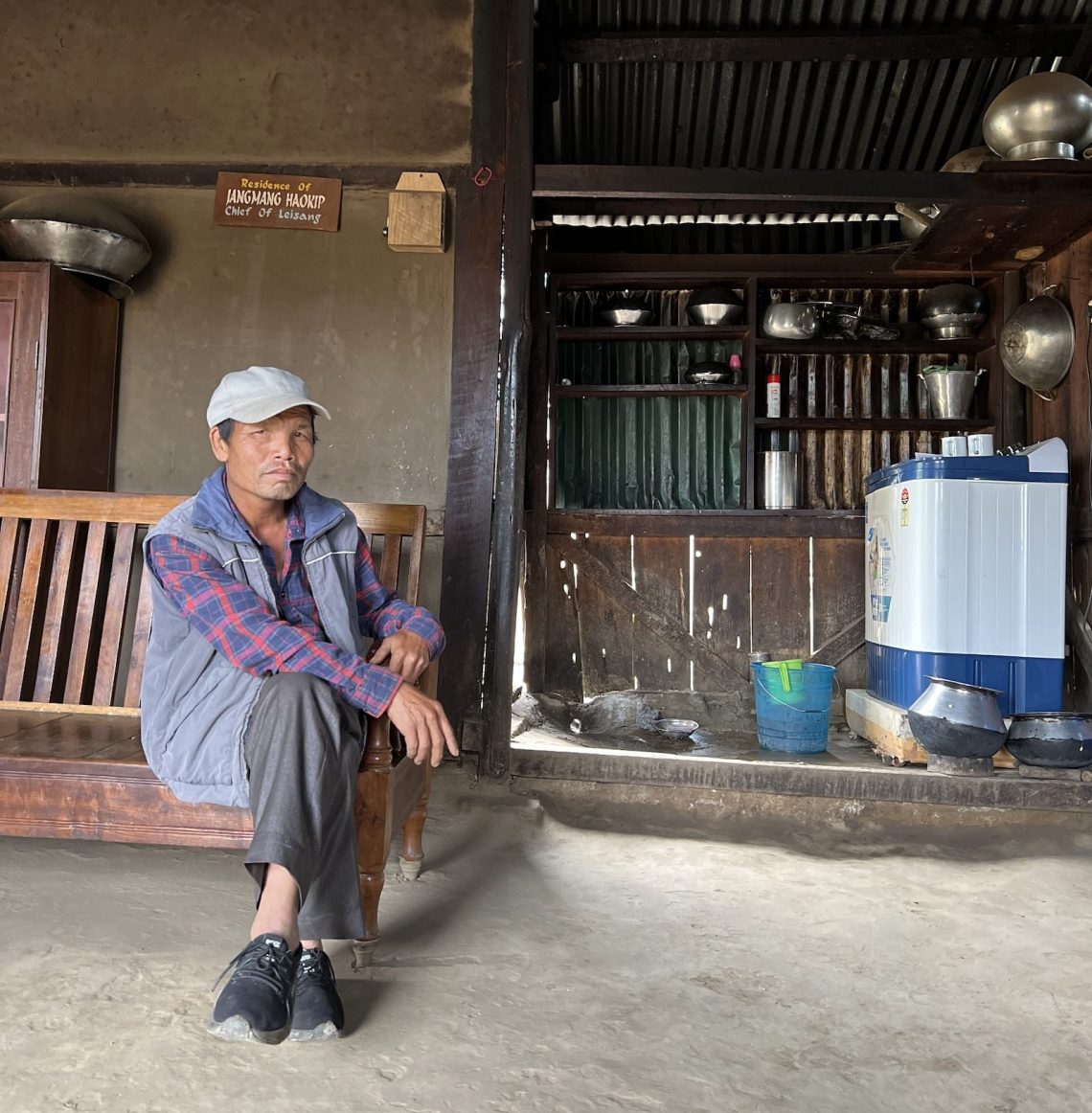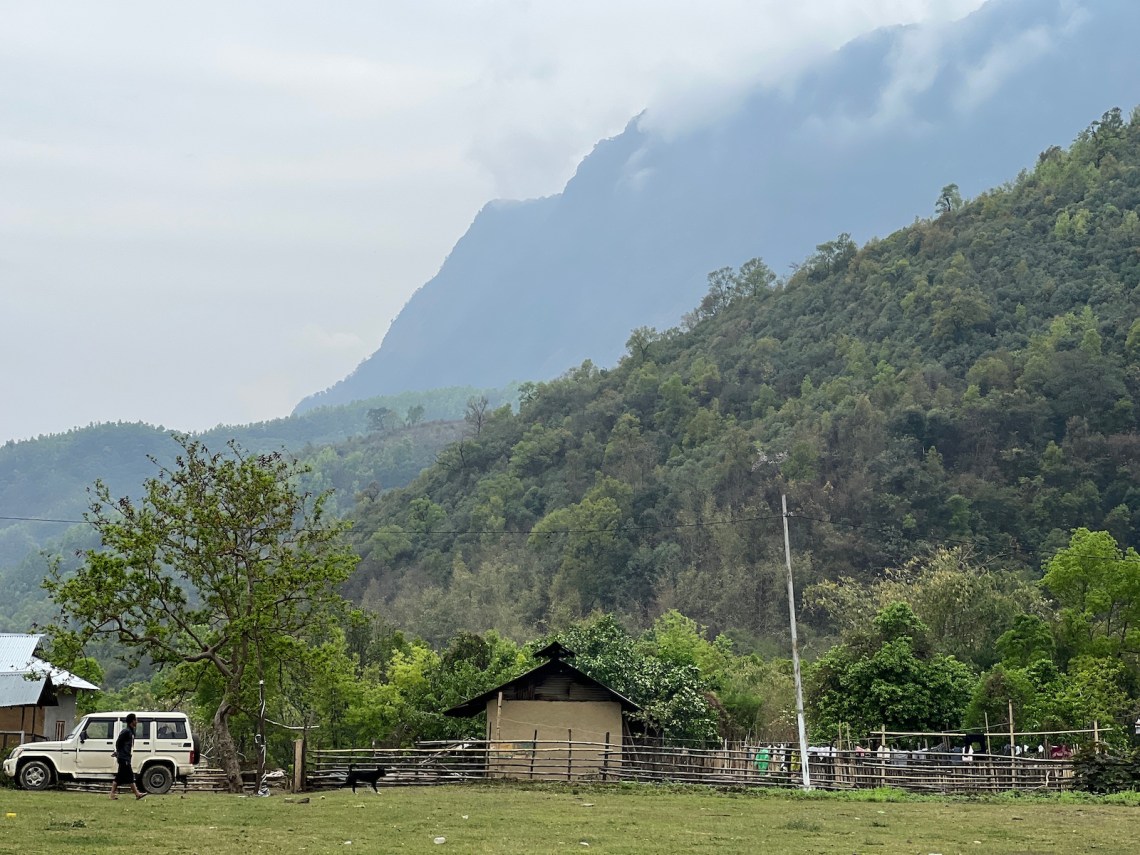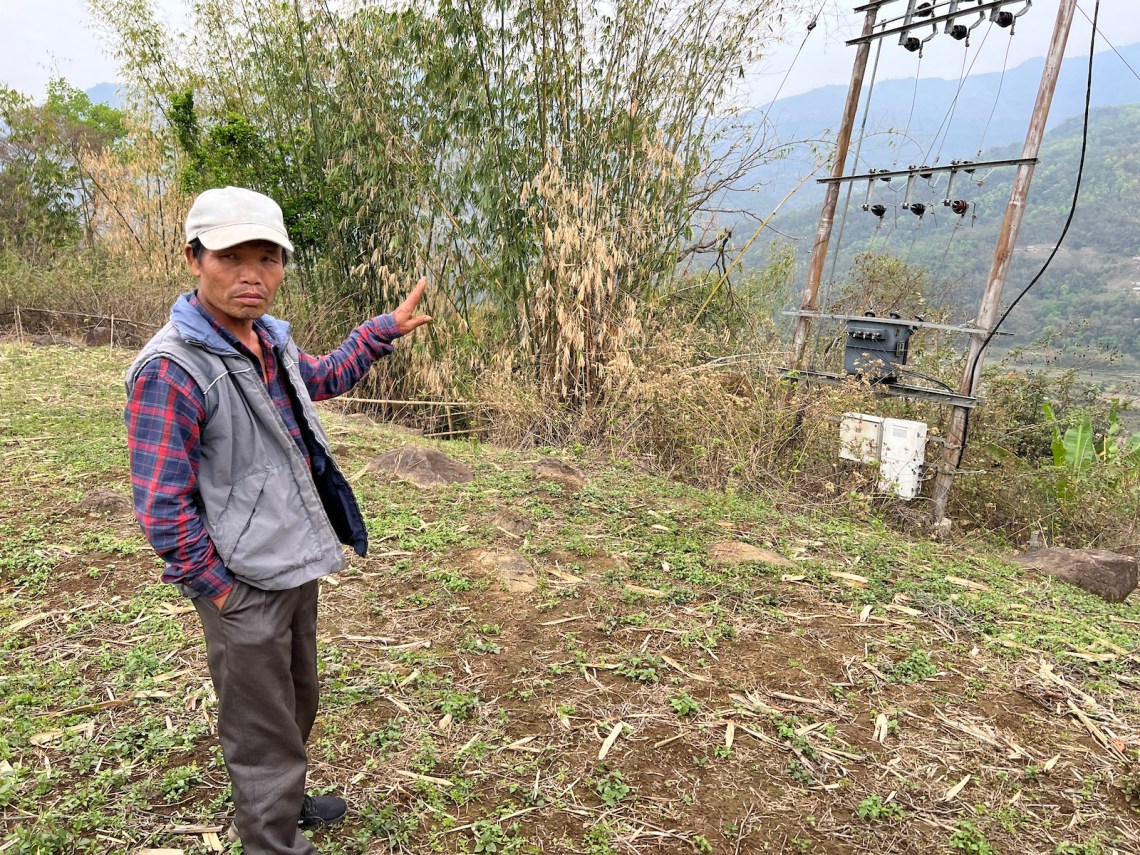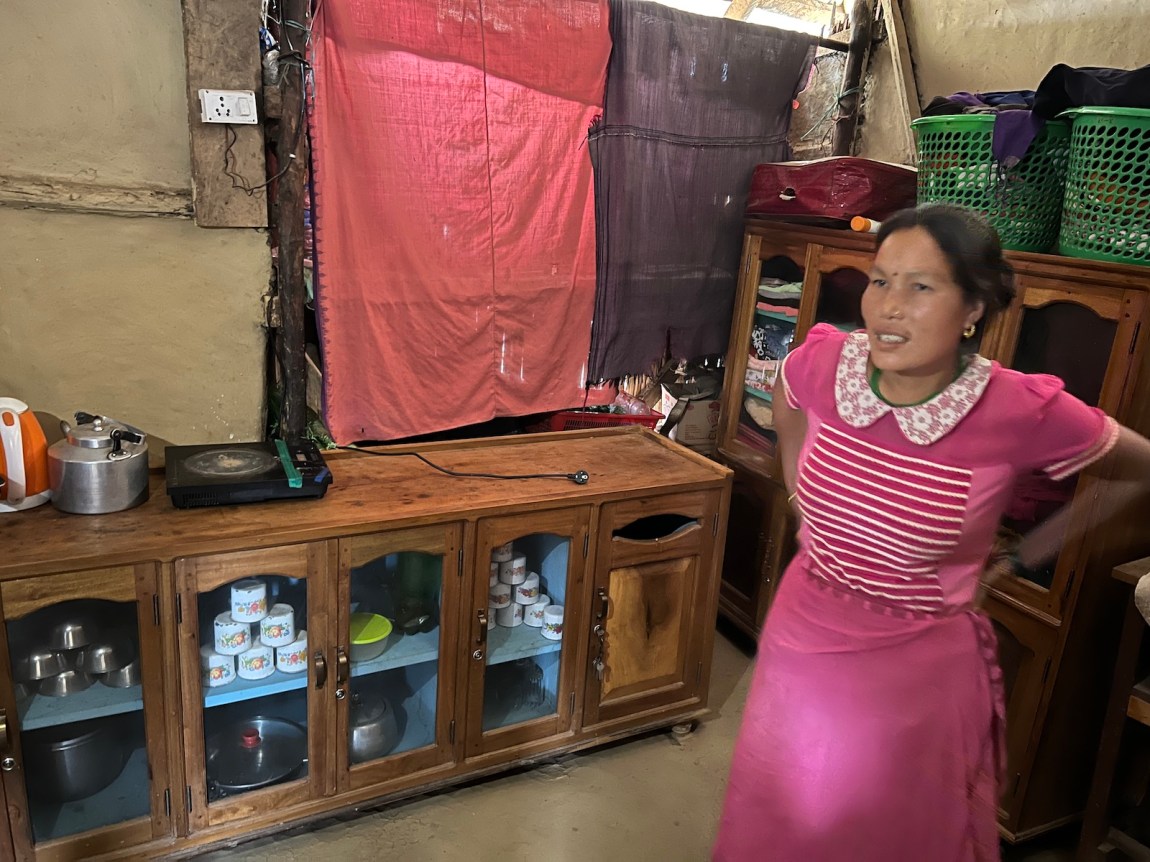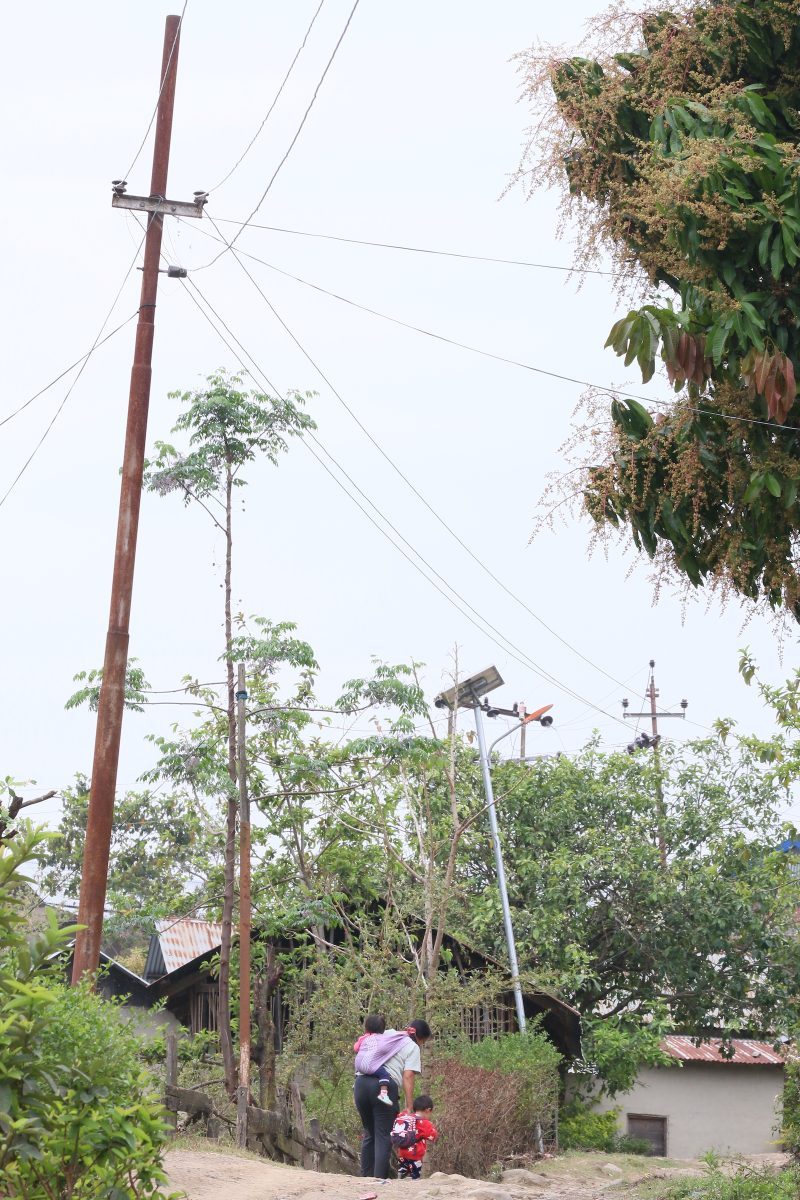Leisang, India—People in this remote northeast Indian enclave still talk about the day back in 2018 when the light came. By “light,” they mean electricity: the village was being connected to the national grid for the very first time. The three dozen or so adults in the village brought some of their children and gathered on the porch of the village chief, Tongsat Haokip. A switch was flipped, and a bulb blinked on. “We were dancing and celebrating,” Satlen Haokip, a forty-three-year-old villager, recalled for me after I made a four-hour trek down a bumpy dirt road to visit Leisang recently. Even four years later, his face lit up as he clapped his hands and did a little dance at the memory.
Thousands of miles away in New Delhi, the government also celebrated. Prime Minister Narendra Modi, soon to face critical national elections, announced that Leisang was the last village in India to be connected to the grid in the government’s much-touted thousand-day drive to bring power to every settlement in the nation, a $2.5 billion initiative that brought power to millions. Job done, trumpeted the press releases: India was electrified.
Government triumphalism and the villagers’ elation were both premature. Leisang, perched on a hillside hours from the nearest town with a hospital or appliance store, still struggles with electricity delivery. The power had been out for days when I arrived in March, and came on only after I left. Nor has electrifying every village in India necessarily meant power for every home. The average Indian still consumes less than one tenth the energy of the average American and only one fifth that of the average Chinese.
Despite this disparity, India is now the third-largest energy consumer and greenhouse-gas emitter, and over the next two decades its consumption will grow faster than that of any other country, according to the International Energy Agency. This will happen as its population swells to become the world’s largest later this decade, and as Indians strive to improve their lives in the same ways others have the world over.
In Leisang, Chief Tongsat recently purchased an electric washing machine. His daughters-in-law no longer have to pound laundry behind the family home. Meena Rai, a thirty-six-year-old mother of five, bought an electric induction burner. She no longer has to cook over an open wood fire in her living room, a dangerously unhealthy practice for her and her children, who can also now study in the evenings by electric light. Lhing Haokip, a twenty-six-year-old mother of three, is hoping for an electric rice cooker. Adults in the village have mobile phones. They are too poor to buy luxuries like air conditioners or cars, but Indian middle-class buying habits indicate that those and many other appliances will become priorities as their incomes, and eventually those of their children, grow. “We’re used to the electricity now. Everybody is happy when it’s on,” Ms. Rai told me as she showed off her electric burner.
India’s dramatic economic growth over the past two decades—and the energy fueling it—has helped to lift hundreds of millions like the villagers of Leisang out of abject poverty. Yet keeping up with energy demand will be a monumental task for the nation, especially in the turbulent global energy markets of today. India’s thirst for energy poses a predicament for the rest of the world, as well. More than 80 percent of India’s energy comes from fossil fuels, and about two thirds of the country’s electricity comes from coal. Generating electricity with coal spews into the atmosphere not only vast amounts of carbon dioxide but also minute particulate pollutants that have helped make the air in India’s cities some of the foulest anywhere in the world.
Using even the dirtiest source of fuel to put lightbulbs and hot plates in the homes of 770 million people would not significantly add to global warming. But as developing countries approach middle-class income levels, their energy consumption will grow rapidly. Building a clean energy system to meet this demand is critical to heading off a new surge of greenhouse gas emissions after 2030. This is the fundamental climate challenge for the developing world, especially India, and it contrasts sharply with the equally pressing need for wealthier countries to begin cutting emissions immediately. “The contribution India has to make is to avoid emissions in the future,” says Navroz Dubash, a climate expert at the Centre for Policy Research in New Delhi. “We need to have a trajectory that looks like a small hill rather than a mountain.”
Advertisement
Tensions between developing and developed countries are rising. Which countries can, or should, pay for the green energy revolution needed in the developing world? The question has bedeviled climate diplomacy efforts since they started in the 1990s. It threatens to sour this November’s critical United Nations global summit, known as COP27, to be held in Egypt, a developing nation of 106 million people. That would be picking up right where COP26 left off last year in Glasgow, Scotland. Cheered on by China, India pushed back against a proposal to eliminate coal, instead insisting on language merely calling for “phasing down” its use.
India and China have pointed out the developed world’s repeated failure to meet its promise to provide at least $100 billion annually for developing nations to address climate challenges. Recently, nations have been at loggerheads over whether some of that support should be considered compensation for “loss and damage” that developing countries are suffering due to the historic accumulation of greenhouse gases by countries that industrialized earlier. Without those funds, and much, much more money—one Indian official at COP26 put the figure at $1 trillion for India alone—India can’t afford to give up coal.
*
South Asia is among the regions most vulnerable to climate change. A recent analysis by the consultancy Standard & Poor’s concluded that South Asian economies are ten times more exposed to climate change than those of the best-positioned nations, mostly in Europe. From the melting glaciers in the Himalayan mountains—on which 1.3 billion people depend for water—to coastal megacities facing higher seas, more storms, and rising temperatures, India is uniquely exposed to nearly all the shocks of climate change.
In my travels over the past five months, I’ve seen the whole array already playing out across the country. A spring heat wave across the northwest drove temperatures that would have broken even summer records, and combined with drought to stunt the wheat crop. Rising sea levels and frequent, intense cyclones are accelerating the coastal erosion on islands in the Bay of Bengal. Increasingly unpredictable rains are wreaking havoc in the famed tea estates of Darjeeling in the Himalayan foothills. Coastal cities from Mumbai on the Arabian Sea to Chennai on the Indian Ocean are struggling with an often-lethal combination of all of the above, as rising sea levels, heatwaves, storms, floods, and droughts have battered them in quick succession.
Yet I have also seen why India is one of the most promising frontiers for clean, renewable energy. With vast, sun-soaked deserts and blustery coasts, its solar and wind power resources rival any country on the planet. During my swing through the country’s northwestern deserts, I toured the world’s largest solar park, wandered through one of many sprawling wind farms that now blanket the region, and visited one of the first operating green hydrogen production plants, a pilot project for a promising new technology to decarbonize difficult industries such as fertilizer production, steel manufacturing, and maritime shipping.
These energy sources offer an alternative to the country’s vast domestic coal reserves. They could also, eventually, reduce India’s reliance on imported oil, which currently accounts for over 80 percent of its oil consumption. The country aims to grow renewable energy capacity more than fourfold by 2030, from about 120 gigawatts today to 500 gigawatts. That would be an astonishing achievement, if it can be done. While in the past year India has been adding renewable power at a faster rate than any other big country, to meet its target would require nearly tripling last year’s gains, every year for the rest of the decade.
In Jamnagar, a city in Prime Minister Narendra Modi’s home state of Gujarat, I saw the foundations for the first stage of what could be the world’s most ambitious integrated renewable energy project—next door to the world’s largest oil refinery. Reliance Industries Ltd., controlled by oil and gas magnate Mukesh Ambani, is building a solar panel factory. He plans to spend some $70 billion over the next decade to add equally large plants that make hydrogen electrolyzers and fuel cells, as well as batteries for electricity storage. Ambani’s similarly outlandish ambitions previously transformed India’s telecom and retail industries, so few doubt his seriousness.
He’s not alone. Gautam Adani, who has built India’s biggest fortune with a ports and coal empire that he started in Gujarat, has also charged into renewable energy. Even as his traditional fossil fuel–driven businesses, including a highly controversial coal mine in Australia, have boomed, his Adani Green renewable energy business arm has expanded to become the largest in the world. Other companies, such as ReNew Power, ACME Group, and Greenko Group, have built themselves into the new elite of India’s rapidly modernizing energy economy.
Advertisement
Prime Minister Modi has emerged as India’s most powerful political figure in at least a half-century, and committed India at the Glasgow climate conference to reaching net zero carbon emissions by 2070. But that target is a long way off, a decade later than even China has publicly committed to (scientists say the world needs to reach that goal as soon as 2050 to have any chance of holding warming to 1.5° Celsius). Now seventy-two, Modi will not likely live to see whether India makes its net zero goal—one reason he may have picked a date so far in the future. But he has as much as almost two years left in his current term, and is widely considered a strong bet for another five years in power. The decisions Modi’s government makes in the coming years—and the international support it receives—will determine India’s energy direction, and much of the world’s fortunes in addressing climate change. With the cost of renewable energy now well below the soaring cost of fossil fuels, strong incentives are in place for Modi to accelerate the pace of transition.
Yet many challenges lie ahead that have proven intractable in the past. These include the towering, unmanageable debts of India’s utility companies (known here as discoms, shorthand for distribution companies), probably the biggest near-term obstacle to speeding up the energy transition. India’s dependence on coal reaches far beyond mere power generation; millions of workers are employed by the industry. Even the country’s railway, whose rapid move from diesel to electric locomotion should be completed this year, remains highly reliant on coal as its biggest and most profitable class of cargo.
Two weeks after I arrived in India, Russia’s invasion of Ukraine completely upended the already struggling global energy markets. Then the unprecedented heatwave enveloped the Indian subcontinent. Electricity demand for cooling spiked just as the economy came roaring back to life after a Covid-induced lull. The sense that India is at an energy and climate crossroads is palpable now. Headlines blare news of blackouts while newscasters debate the implications.
The government has unveiled ambitious plans to spur the solar and green hydrogen industries, even while ordering that more coal be mined at home and imported from abroad to meet electricity demand. For the first time in years, India’s state-controlled power giant, NTPC, said it would restart several shelved plans for more coal-fired generation. The government, watching its oil import bill skyrocket with global prices, has stepped up imports of Russian oil and coal, both of which they can get at a huge discount as these are embargoed by much of the rest of the world. Refineries such as the Reliance plant in Jamnagar have scored record profits turning that crude into petroleum products.
Yet the work on the solar panel plant next door continues apace.


